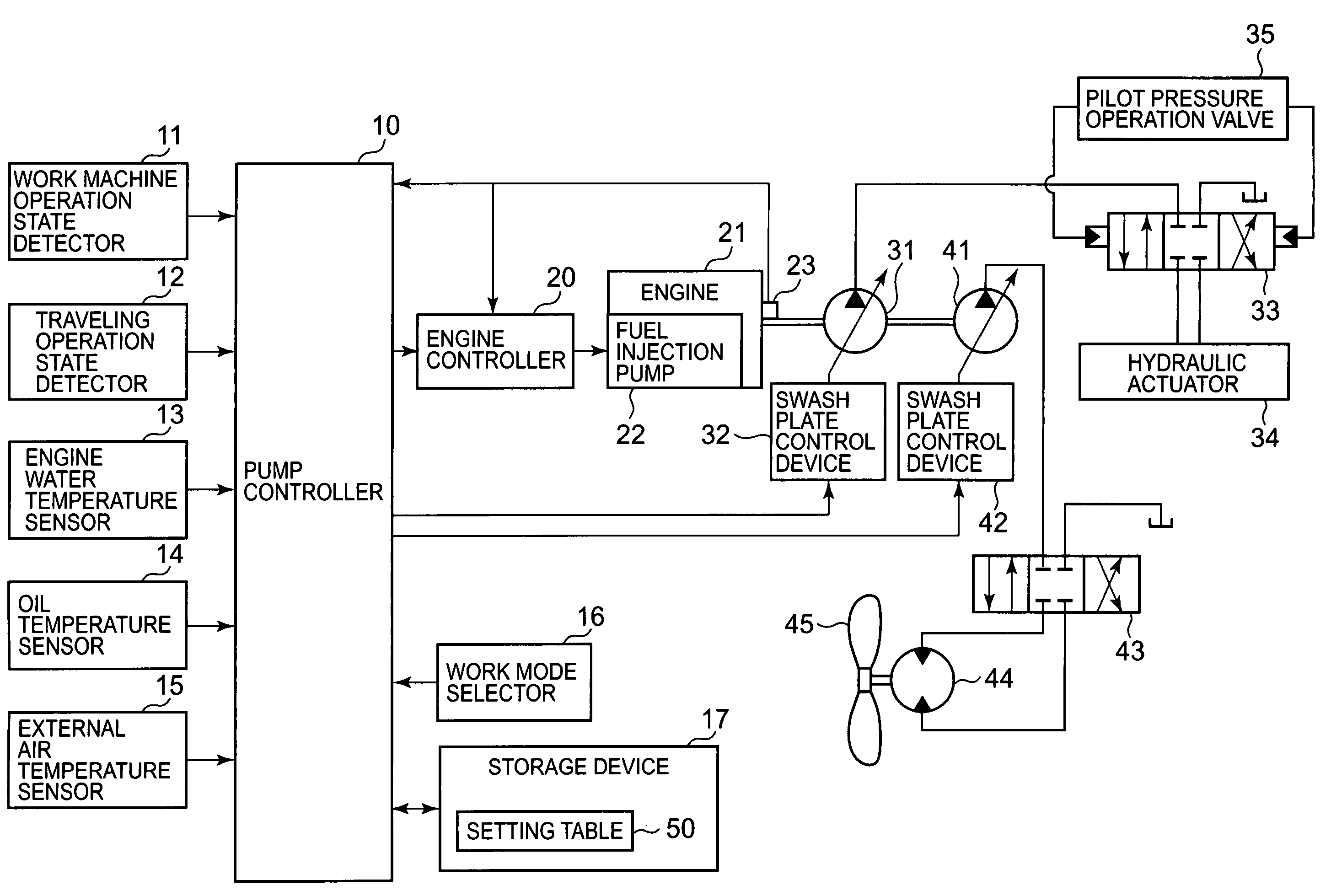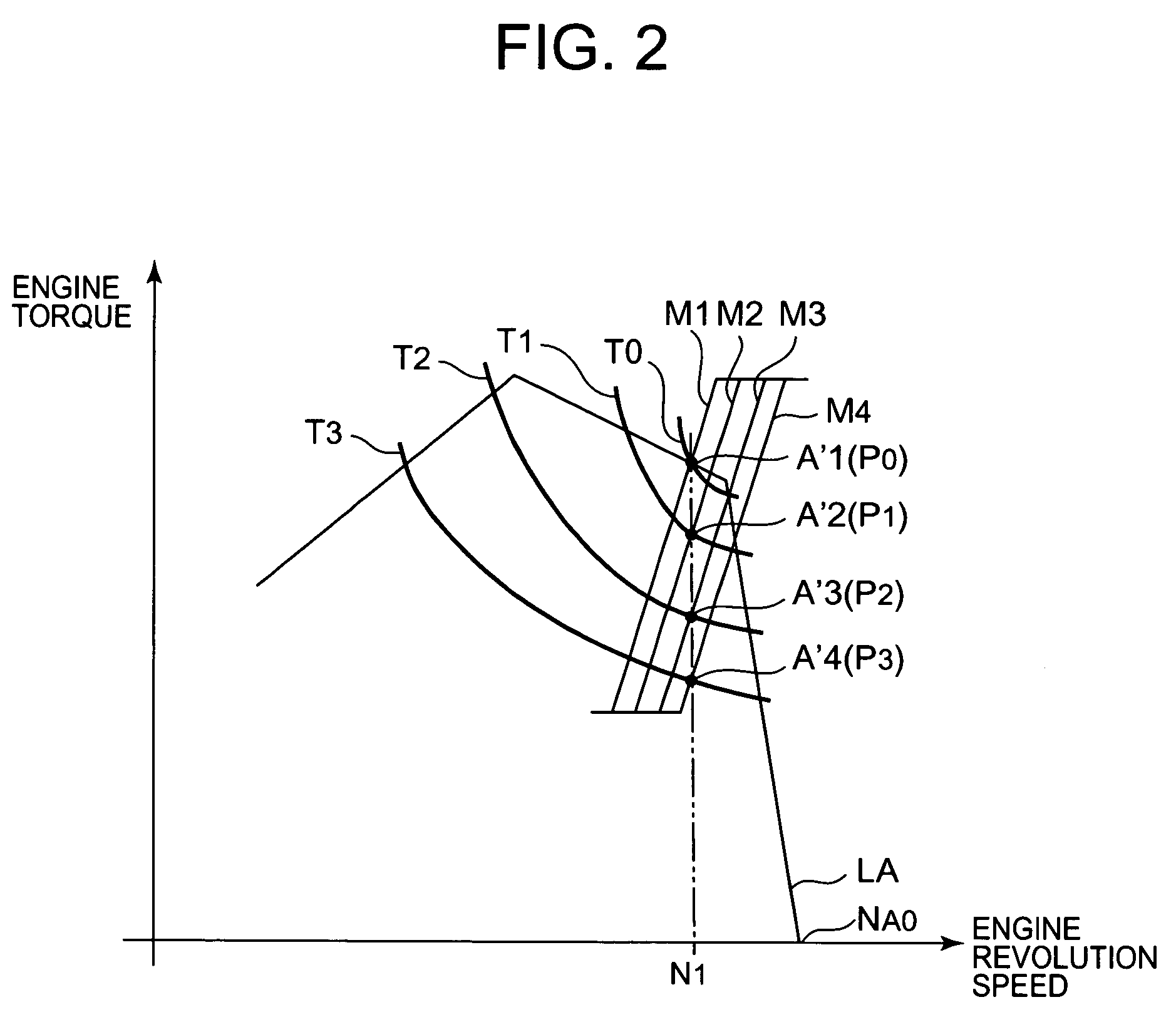Device and method of controlling hydraulic drive of construction machinery
a technology of hydraulic drive and control device, which is applied in the direction of electrical control, positive displacement liquid engine, fluid coupling, etc., can solve the problems of decreasing operability, achieve stable stable operation speed or drive torque of work machine, and achieve stable operation speed or drive torque
- Summary
- Abstract
- Description
- Claims
- Application Information
AI Technical Summary
Benefits of technology
Problems solved by technology
Method used
Image
Examples
Embodiment Construction
[0024]An embodiment of the device for controlling hydraulic drive in accordance with the present invention will be described below with reference to the appended drawings.
[0025]FIG. 1 is a block diagram illustrating the hardware structure of an embodiment of the hydraulic control device in accordance with the present invention. FIG. 2 is an explanatory drawing of engine output characteristic and a pump absorption torque characteristic that illustrate the operation of the hydraulic control device. First, the hardware structure will be explained with reference to FIG. 1 and FIG. 2. Here, the explanation will be conducted with reference to a hydraulic shovel as an example of a construction machine using the present invention.
[0026]As shown in FIG. 1, a hydraulic pump 31 for a work machine and a hydraulic pump 41 for an auxiliary device are linked via a power take-off device (not shown in the figure) to an output shaft of an engine 21. The oil discharged under pressure from the hydrauli...
PUM
 Login to View More
Login to View More Abstract
Description
Claims
Application Information
 Login to View More
Login to View More - R&D
- Intellectual Property
- Life Sciences
- Materials
- Tech Scout
- Unparalleled Data Quality
- Higher Quality Content
- 60% Fewer Hallucinations
Browse by: Latest US Patents, China's latest patents, Technical Efficacy Thesaurus, Application Domain, Technology Topic, Popular Technical Reports.
© 2025 PatSnap. All rights reserved.Legal|Privacy policy|Modern Slavery Act Transparency Statement|Sitemap|About US| Contact US: help@patsnap.com



